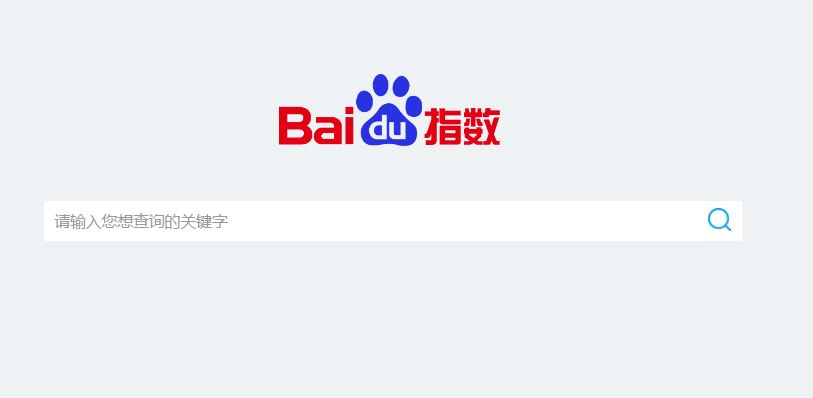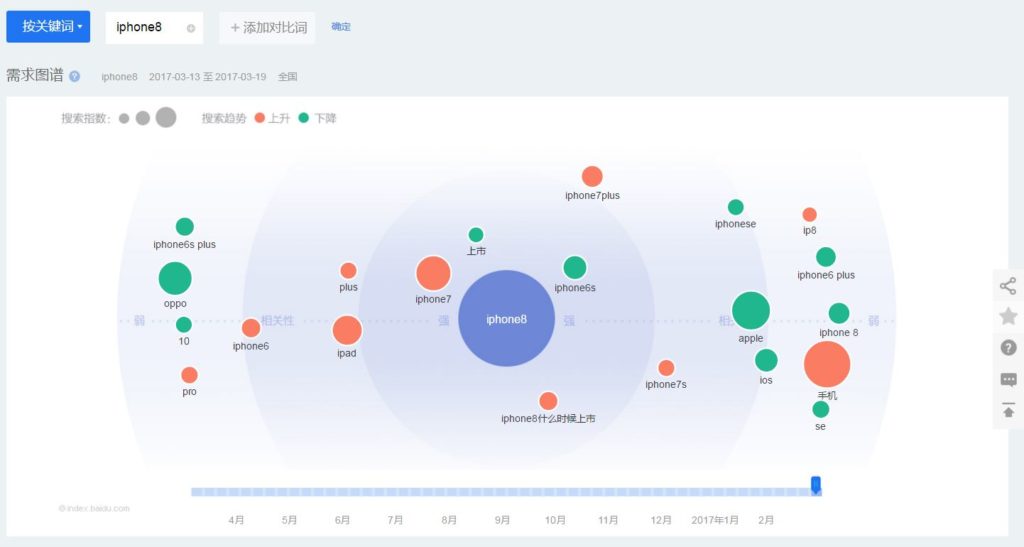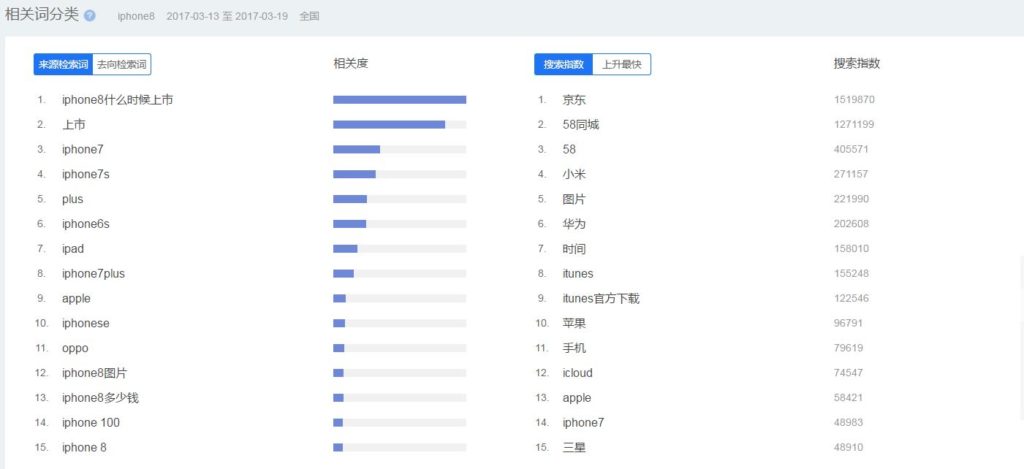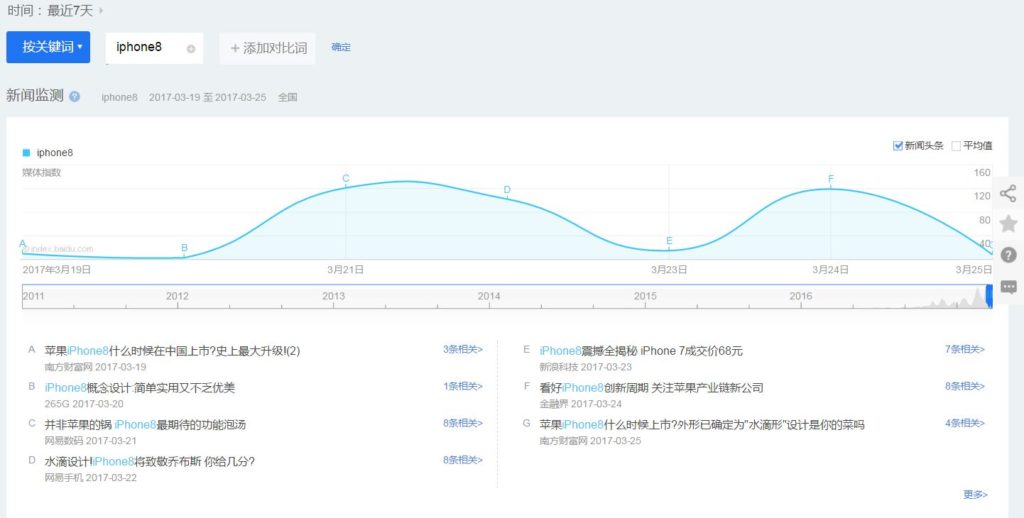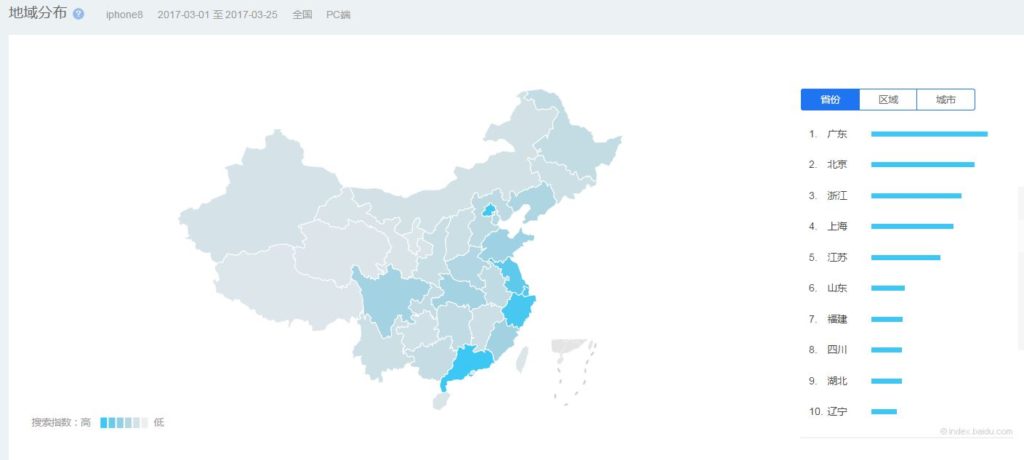Baidu Index Tutorial
Being the largest search engine in China, Baidu keyword research should be the one to start with. Currently, Baidu offers Baidu Index tool that is free for Baidu advertising accounts, offering some basic information to users.
Here is an example of searching for keyword “iPhone8” (most Chinese users would typically type in “iPhone8” without space between the two words).
First, Baidu Index would match it with a keyword in the database before displaying the data. This means that for some rare keywords or those with low search volumes, this tool may not show any results. For those cases, a more powerful keyword research tool within Baidu advertising account must be used.
The top section shows the numbers for search volumes on PC (25,999) and mobile (20,070). It is remarkable to note that the overall search volume for this particular term is only 20% larger on PC vs. mobile.
Some points on the graph are also marked with letters: A, B, C, D etc. Those can be linked to a particular events such as mentions in media. Viewing the relevant content can give a researcher further insight on what was behind peaks and valleys of the chart.
Next, Baidu Index shows some more data on related keywords and how they are related to the original one in a key phrase (sometimes called long tail keyword). The size of the bubble illustrates the search volume and the color – the relative position.
Manipulating the slider allows viewing snapshots of the related keywords at different time periods. It can also help getting an idea on how the searches were changing over time.
The data is further detailed in the list of top related keywords that come before or after this specific keyword. This panel also lists the sites that have received most hits as a result of this keyword search:
Unsurprisingly, the most common key phrase was about the timing of iPhone 8 release.
Next graph specifically focuses on media mentions of the keyword. From here, user can view the actual article. This helps figuring out which type of news helped driving more searches and which had little to no effect.
The following series of data focuses on the audience. The map below illustrates search volume distribution by province. From here, the data can be further drilled down to the levels of area and city.
Finally, the audience is broken down by age distribution and gender. According to Baidu, iPhone 8 was mostly searched by males between ages of 20 and 39.
Continue to Qihoo Index tutorial >>>
Here are our tutorials on China keyword research tools:

